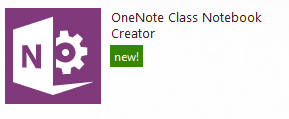Here are some great thoughts from my teaching partner Chantelle Davies, Some interesting thoughts as we continue to move forward with technology in our classrooms.
Ontario’s Growing Success document outlines assessment, evaluation, and reporting policy for the Ontario Curriculum. It is based on seven fundamental principles which provide the foundation for the policy that is outlined in the document. Each of the policies outlined in the Growing Success document build upon these principles. These seven fundamental principles are as follows and suggest that “teachers use practices and procedures that:
- are fair, transparent, and equitable for all students;
- support all students, including those with special education needs, those who are learning the language of instruction (English or French), and those who are First Nation, Métis, or Inuit;
- are carefully planned to relate to the curriculum expectations and learning goals and, as much as possible, to the interests, learning styles and preferences, needs, and experiences of all students;
- are communicated clearly to students and parents at the beginning of the school year or course and at other appropriate points throughout the school year or course;
- are ongoing, varied in nature, and administered over a period of time to provide multiple opportunities for students to demonstrate the full range of their learning;
- provide ongoing descriptive feedback that is clear, specific, meaningful, and timely to support improved learning and achievement;
- develop students’ self-assessment skills to enable them to assess their own learning, set specific goals, and plan next steps for their learning.
As I reflect on different aspects of the document I think about how the 21st Century tools we use in the classroom today impact our assessment and evaluation. In light of having recently completed progress reports, I consider how important students mastery of the learning skills are to a successful school year. Early in the year, we often focus on the learning skills of responsibility and organization. We work hard with students in September and October to ensure they are completing their work in a timely manner; and that they can create and follow plans to complete this work to the best of their abilities.
While we all hope that these skills come naturally to our students; in many cases these skills need to be taught. In light of the fundamental principles that ask us to be transparent and to communicate clearly with students and parents, technology makes it easier for us to do so and thus in turn also helps us to provide our students with further support in staying organized. For example, as I make greater use of my classroom blog I am also using it as a space to share what our class learnings have been, provide copies of handouts/homework that have been assigned, and share when deadlines are coming up. Having this additional tool not only helps to make students more accountable (because they can’t say they didn’t know when a test was), but it also teaches them how to use other tools to remain responsible and organized. My students know that if they forget to take their reading logs home on the weekend that they don’t have to come to school with their work incomplete on Monday. They can look on the class blog for a copy of the task choices they have to choose from and still ensure they have been responsible; completing their homework.
In addition to learning skills, using 21st Century tools allows us to be more effective in meeting several of the fundamental principles outlined in the document. For example, the use of some technologies allows us to ensure that feedback is clear and timely. This can be seen when students are using tools such as google documents or google slides to complete their work. The ability to highlight and comment right on specific section of their work ensures that students are clear on which aspect of their assignment you are speaking of. As well, tools that all us to give audio feedback allow teachers to give feedback faster and to ensure that the feedback is clear for all students, without the limitation of being able to read the teachers written word.
It is still possible to meet the seven fundamental principles from the document without incorporating technology into your practice. However, not only does technology allow us to better engage and support all students; it makes us more efficient at meeting these important guidelines around assessment and evaluation.
